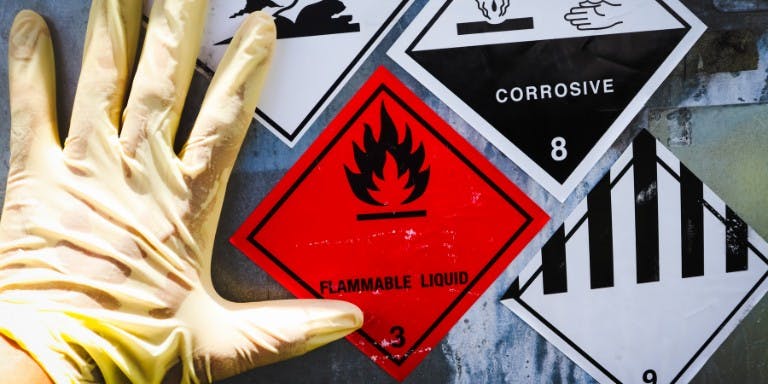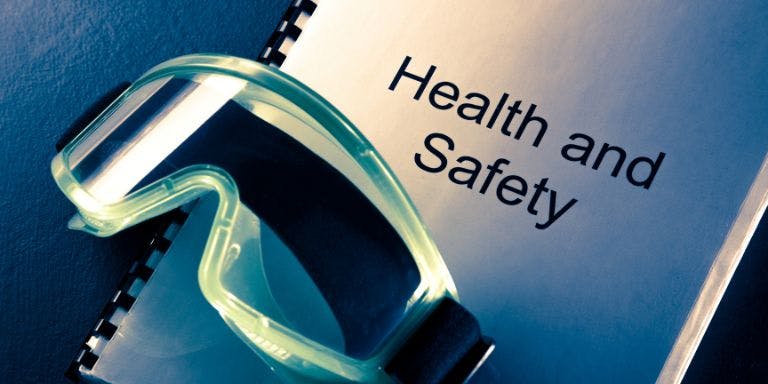First published on Wednesday, June 24, 2020
Last updated on Sunday, March 16, 2025
Jump to section
As an employer in the UK, ensuring a safe working environment is not just a legal obligation but also a moral one. One area that often gets overlooked is noise at work.
Excessive noise levels in the workplace can have serious consequences for your employees' health and wellbeing, and it’s your responsibility to address and manage this risk effectively.
Understanding the impact of workplace noise
You might not immediately consider noise as a significant hazard, but prolonged exposure to high noise levels can lead to irreversible hearing damage, including tinnitus and noise-induced hearing loss (NIHL).
Beyond hearing loss, excessive noise can also contribute to stress, reduce productivity, and increase the likelihood of accidents due to impaired communication and concentration. We’ll cover these in more detail later on.
In the UK, the Control of Noise at Work Regulations 2005 set out your duties to protect employees from excessive noise.
If employees are exposed to noise levels exceeding 80 decibels (dB(A)) but less than 85 dB(A) on a regular basis, you must take action. This involves conducting a risk assessment, implementing noise control measures, and providing hearing protection where necessary.
It’s important to note that the legal maximum noise level at work is 87 dB(A) and if employees are exposed to noise levels over 85 dB(A), you must provide them with hearing protection.
For more information on noise levels, why not ask Bright Brainbox: What are the upper actions values of noise levels? Or What are the lower actions values of noise levels?
What are the risks of noise at work?
As promised, we’re now going to cover the risks associated with noise in the workplace in more detail. Prolonged exposure to high levels of noise can result in:
Hearing Loss: The most immediate risk is noise-induced hearing loss (NIHL). This condition is irreversible and can severely impact an employee's quality of life.
Tinnitus: Persistent ringing in the ears, known as tinnitus, can be caused by noise exposure. It can be distracting, distressing, and difficult to treat.
Increased stress levels: High noise levels can cause stress, leading to both mental and physical health issues such as anxiety, depression, and high blood pressure.
Reduced productivity: Noise can interfere with communication, concentration, and overall workplace efficiency, leading to mistakes and a reduction in productivity.
Accidents and injuries: In noisy environments, communication breakdowns can lead to accidents, especially in workplaces where machinery or safety-critical instructions are involved.
Conducting a noise risk assessment
A noise risk assessment is the first step in managing noise at work. This involves identifying areas where noise levels are high and evaluating the risk to employees. You should measure noise levels using appropriate equipment and consider factors such as the duration of exposure and the use of any noisy machinery.
But simply measuring noise levels is not enough. You must also evaluate who is at risk and to what extent. Consider all employees who are regularly exposed to noisy environments, even those who might not seem directly involved in noisy tasks.
For example, office workers located near a factory floor or those in open-plan offices with high background noise could also be at risk.
If you would like more information on how to conduct a noise risk assessment, see five steps to a risk assessment.
Implementing noise control measures
Once you’ve identified the risks, the next step is to control them. To effectively manage the risks of noise at work, it’s crucial to implement a range of control measures.
These can be broken down into three main categories:
Engineering Controls
The most effective way to reduce noise is to eliminate or substitute noisy processes or equipment. So where possible, eliminate the source of noise altogether or substitute it with quieter alternatives. For example, using quieter machinery or changing processes to reduce noise generation.
If that’s not possible, consider other engineering controls such as installing enclosures around noisy equipment to contain the noise or use barriers and screens to shield workers from direct exposure.
Alternatively, you could use sound-damping materials or noise-absorbent panels to reduce the reflection and transmission of sound within the workspace.
Administrative Controls
Administrative controls can also be effective. This might involve limiting the duration of exposure by rotating workers or scheduling noisy activities at times when fewer employees are present.
You can also regularly maintain equipment to ensure it operates as quietly as possible—worn-out parts often increase noise levels.
Another effective administrative control is to designate specific areas as quiet zones, especially where concentration is critical, and enforce strict noise controls in these areas.
Personal Protective Equipment (PPE)
As a last resort, when noise cannot be reduced to safe levels through other means, provide employees with PPE. For example, appropriate hearing protection, such as noise cancelling earplugs or earmuffs, particularly if noise cannot be sufficiently reduced through other means.
Just remember to make sure employees are trained in the correct use of PPE and that it’s properly fitted to provide maximum protection.
The role of health & safety software in managing noise
Managing noise at work can be complex, especially if you operate in an environment with fluctuating noise levels or diverse work processes. This is where health and safety software can make a significant difference.
Health and safety software can help you monitor noise levels in real-time, ensuring you stay compliant with legal requirements. It can also assist in scheduling regular noise assessments and maintaining records of employee exposure.
Plus, the right software can streamline your risk assessments, automate the implementation of control measures, and ensure that your employees are always aware of the risks and the steps they should take to protect themselves.
Take control of noise in your workplace
Noise at work is not an issue that you can afford to ignore. The health of your employees and the productivity of your business depend on effective noise management. By investing in health and safety software, you can simplify the process, ensure compliance, and most importantly, protect your workforce.
Take the first step towards better noise management today. Explore BrightSafe’s health and safety software solutions that can help you assess, control, and monitor noise levels in your workplace.
By doing so, you’ll not only meet your legal obligations but also demonstrate your commitment to creating a safe and healthy working environment for all your employees.










